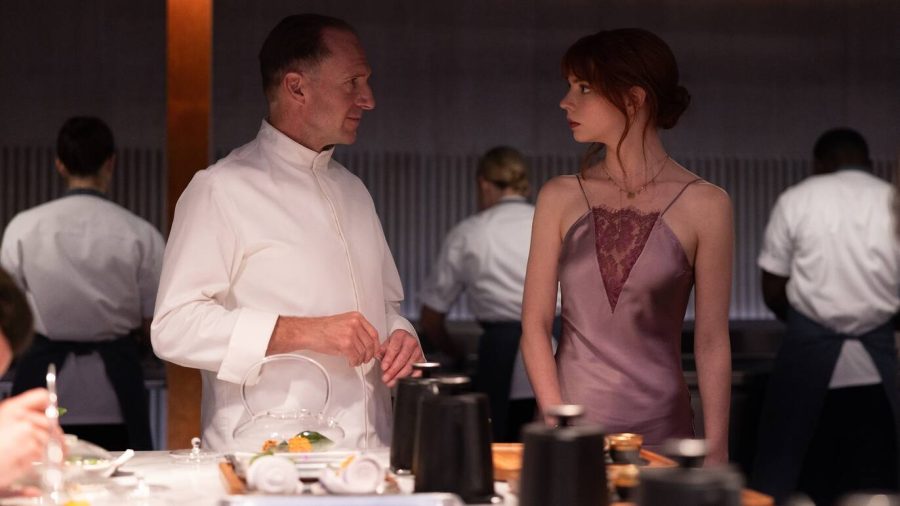“The Menu” serves laughs, scares in over-the-top dark comedy
Photo Courtesy of Woodford Reserve
Anya Taylor-Joy and Ralph Fiennes bring undeniable charm to this food-centric dark comedy.
February 13, 2023
Debuting in theaters late last year, “The Menu” cooks up a disturbingly delectable dark comedy centered around haute cuisine. On an island where only the richest members of society come to experience expensive meals that are more artistic than they are practical, Chef Slowik (Ralph Fiennes) finds himself stuck between honing his craft and having a passion for cuisine and being forced to cater to rich and arrogant patrons that care more about flaunting their affluent status than the actual food being served. After all, these are the types of customers to spend over a thousand dollars just to be served a bread plate without any actual bread. Among the wealthy patrons for a particular evening are Tyler (Nicholas Hoult) and Margot (Anya Taylor-Joy), a fanatic foodie and his date who couldn’t care less about pretentious descriptions of food but still looks forward to a good meal. However, the night quickly turns sour as the patrons begin to turn up dead, and the plot unravels what’s truly happening behind the scenes of the kitchen.
“The Menu” relishes in its lack of subtlety from the overtop nature of its gore and violence to its on-the-nose, aggressive stance against social classism and wealth. While the entire cast of the film helps contribute to the film’s morbid atmosphere, Fiennes in particular with his role as Chef Slowik is a standout. He sells his soft-spoken nature and threatening aura. The hidden layers of Slowik’s character make him both unpredictable and thoroughly entertaining as a villain. The plot of the film has twists and turns to keep it consistently entertaining with it capturing a similar feeling of mystery featured in classic “whodunnit” stories. However, the actual substance of the plot beats themselves feel slightly undercooked as the story doesn’t take the time to explore or explain how and why specific events happen.
While “The Menu” definitely has a sizeable amount of horror and disturbing scenes on its plate, the real main dish that helps bring it together is the humor of the writing. From the dialogue to the absurdity of the situation, the film balances its disturbing elements with doses of comedy that are so jarring given the context of the plot that it retroactively works. The film also uses its premise to give social commentary on capitalism and consumerism, which can especially be felt with how each of the patrons are deliberately made out to be unabashedly horrible people. Every character feels irredeemable by the film in a way that propels the viewers towards wanting to see their gruesome fates uncomfortably unfold. The satiric nature of the film is heavily leaned into, but it is handled in a way where it doesn’t completely detach the audience from what the characters have in store. The film’s biggest theme is the mixing of commerce and art, showing that despite how linked the two are, it is impossible for the two to properly complement and elevate each other.
Ultimately, “The Menu” brings to the table a thrilling, creative experience that will stay in the minds of the audience long after they’ve finished their last course.









